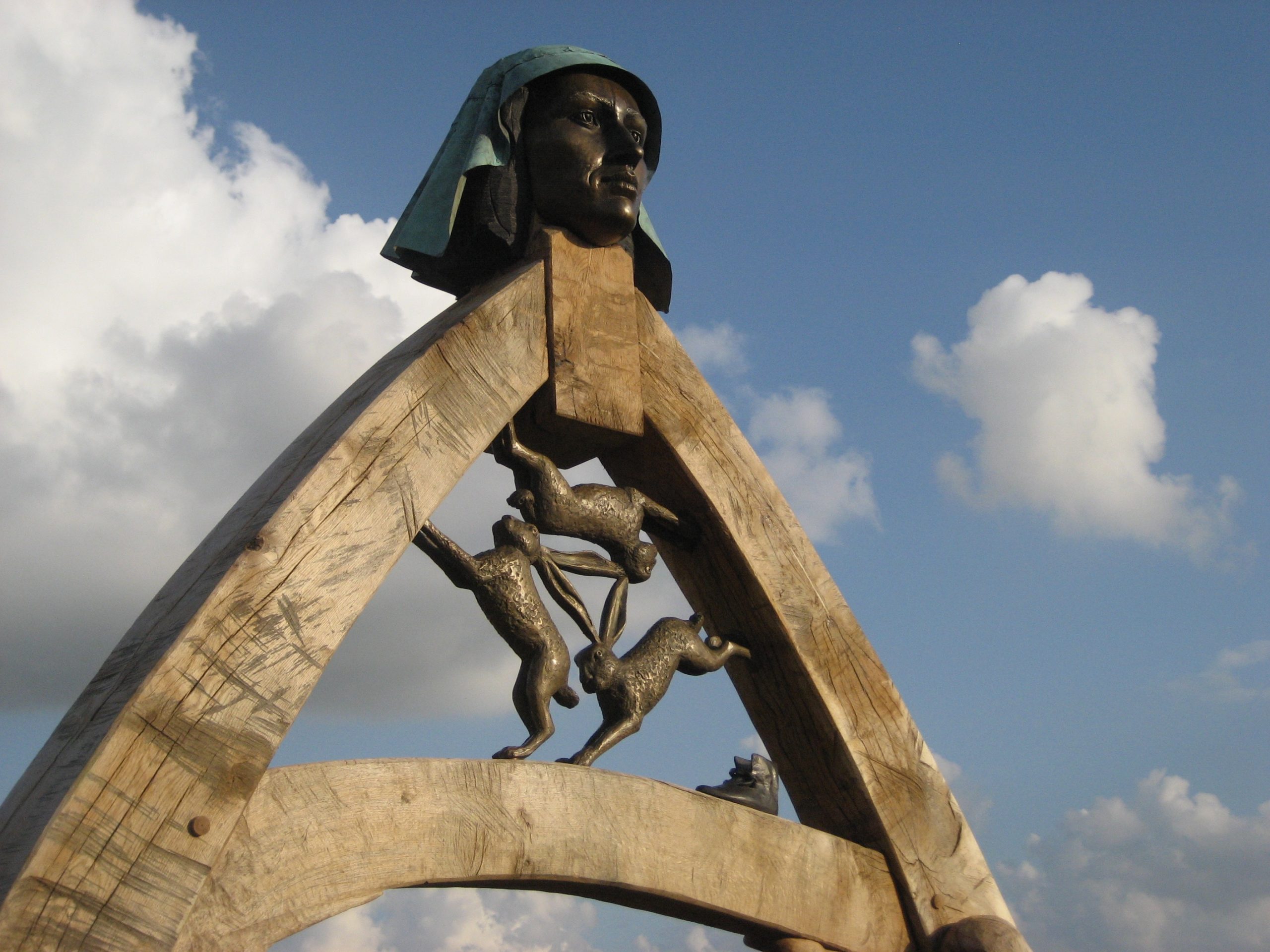
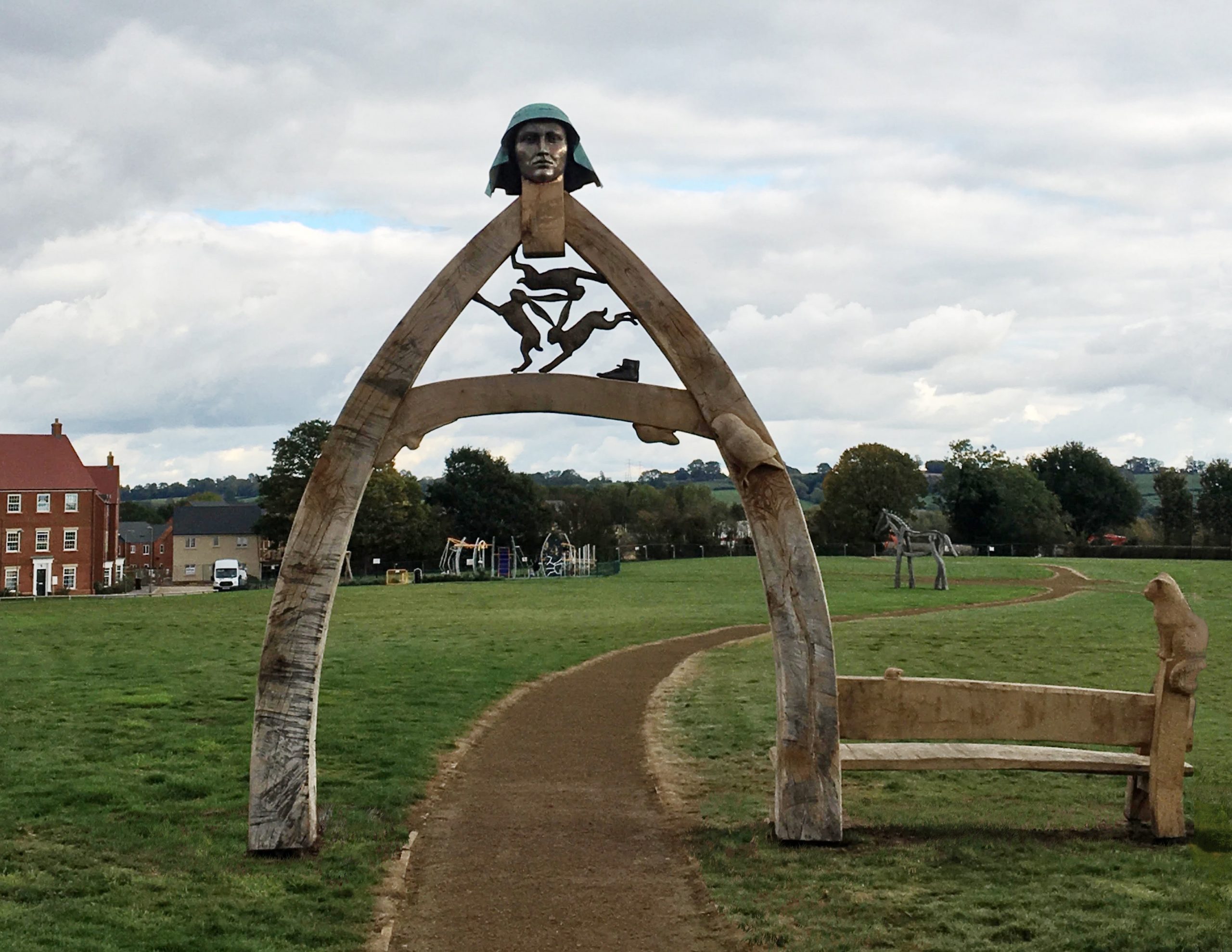
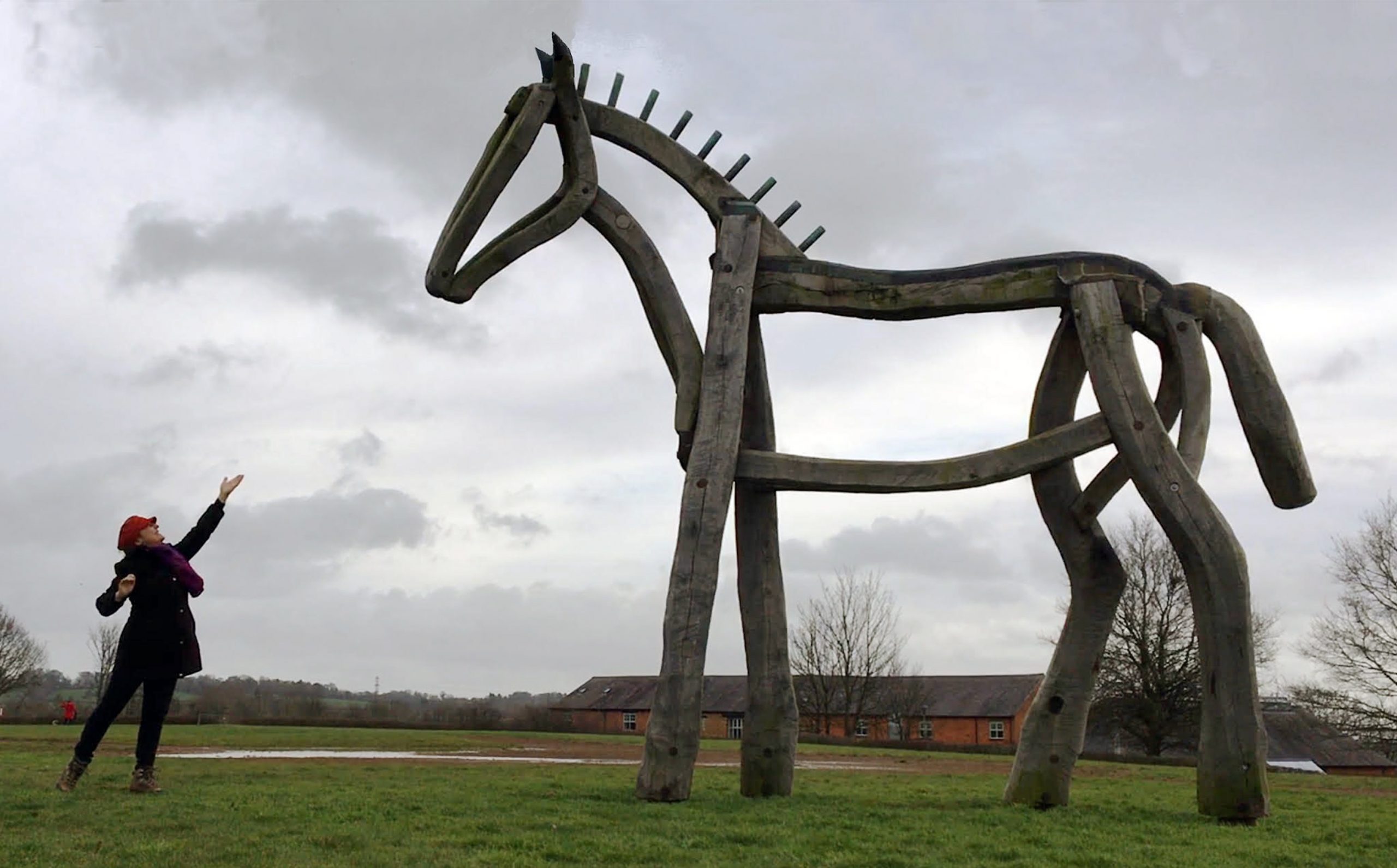
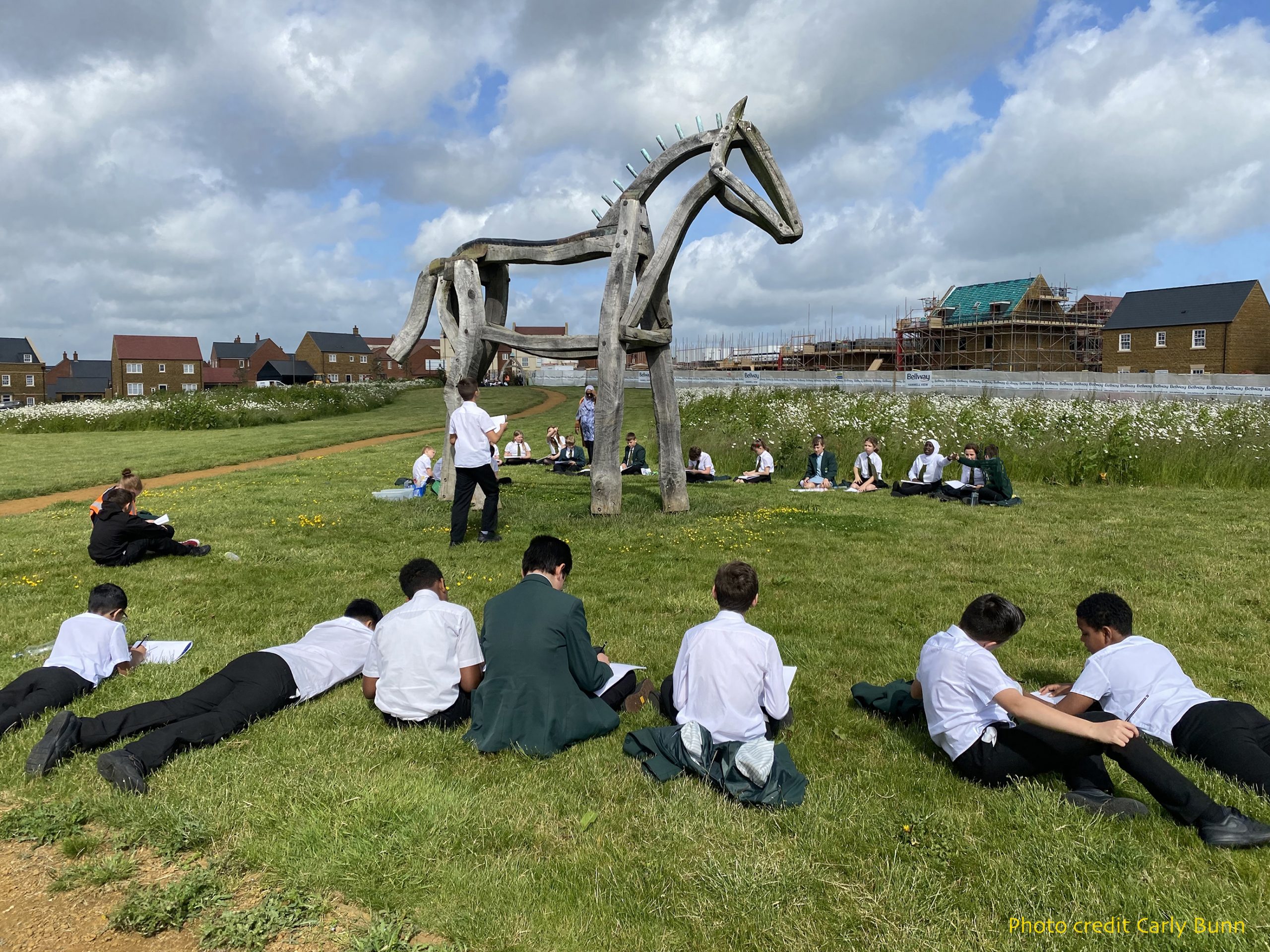
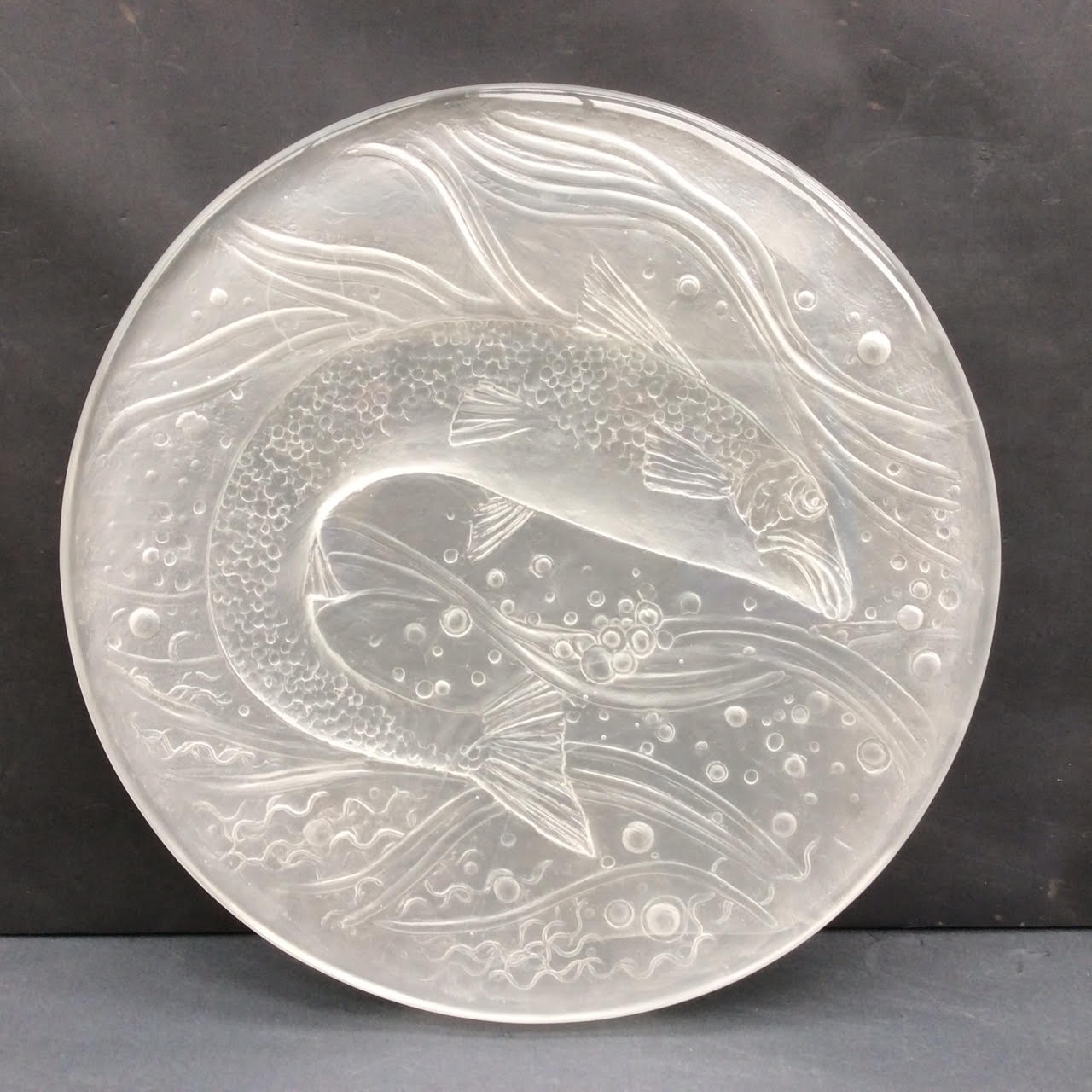
Client: Cherwell District Council
Location: Banbury, United Kingdom
Completion date: 2023
Artwork budget: $110,000
Project Team
Sculptors
Philip Bews Diane Gorvin
Client
Paula Bailey
Cherwell District Council
Bronze Casting
Chris Weston
Castle Fine Arts Foundry
Glass Casting
Sally Fawkes Richard Jackson
Jackson Fawkes Glass
Fixing Mane
Paul Wigley
Made by Mole
Installation
Damon Bramley
Sculpture Transport & Installation
Project Funder
Bellway
Music - Piano Suite IV: Newark Airport 1
Lola Perrin
Composer Pianist
Mould Maker
Dorota Rapacz
Sculptor
Overview
Settlement Sculptures – Horse and three Arches, Hanwell View, Banbury.
Commissioned by Bellway and Cherwell District Council for a housing development surrounding the below ground, deserted, medieval village, where the artworks are placed. The sculptures are installed to the building phases’ timescale, currently the Horse Sculpture and Arch1 have been sited. Each Arch has its own historic theme, with associated seating. The Medieval Widow’s Arch is the first, and features a finial head of a widow who brewed ale, baked bread and made the famous Banbury cakes and cheese, these are carved on the seat back, with the first line of Banbury Ale by Thomas Ravenscroft (1582-1633). The Horse sculpture is the focal point of the site, being an essential part of medieval life for transport and ploughing. View settlementsculptures.co.uk for more information, the research PDF about the project gives details about the Arches’ features. The glass salmon relief is for the apex of the 2nd Farmer Salmon Arch – he farmed the area in the 18th century. Elements of this arch, currently being constructed, can also be viewed in the slideshow. The installed artworks are featured on www.artuk.org if you search the site via Bews Gorvin.
Goals
Diane researched local history, and created the Settlement Sculptures website - designed to show the project's progress. Leaflets about the website were organised by Paula Bailey and posted locally. Cherry Fields Primary School is close to the sculptures’ park site where the artworks form an educational trail. The Arches contain elements that link thematically, and both sited sculptures provide homes for wildlife. The website's ‘Learn’ page links to Paula Bailey’s dance improvisation videos, with music by Lola Perrin from her CDs 'Fragile Light' and 'Peculiar Grace And Other Loves', showing that dance can be used to explore public sculpture. Educational Arts booklet PDFs, based on the Settlement Sculptures by teachers Sharon Brookes and Kirsten Black, are also available for pupils to download and work from. Teachers arrange trips to experience the sculptures as a part of their curriculum, with the possibility of an online meet up with the sculptors, where pupils ask questions and show their drawn and modelled responses to the artworks.
Process
Diane and Phil collaborated on the design for the project. Phil sourced green oak boughs for the curved components of each sculpture. Two storms helped the extensive search for timber. The branch that fell during Storm Gareth, in the sculptors’ local woods, supplied the timber for Arch 1, and a massive Oak downed by Storm Dennis in Lydney Park Estate provided enough wood for Arches 2 and 3. The larger structures were shaped and jointed by Phil at a rented outdoor workspace in nearby Noxon Farm, with help from Paul Wigley on the Horse’s mane. Joints are secured with stainless steel through-bolts, and internal brackets fixed within the lower ends of the structure, to bolt the artwork down onto concrete bases. Seating and carved elements are made by Phil in our studio, which is also where Diane modelled the elements cast into bronze by Castle Fine Arts Foundry, with moulds made by Dorota Rapacz, and the glass fish relief cast by Jackson Fawkes Glass. English Oak gives a durable heartwood timber which is naturally resistant to weathering and decay, and is the same timber used in medieval times, it is allowed to weather to a natural silver-grey.
Additional Information
The general themes the three Cruck Arches have in common to aid the linking of each in a trail for the school. Pause on the detailed design drawings to read the specific information pertinent to each Arch. • All Arches overall height 4 metres. • At the apex of each Arch is a finial in the form of a carved Oak head supporting a bronze face/mask, with hidden bat crevices. • A square, triangle or circle frame fits within the tympanum - the space at the top of each arch. Each geometrical frame will hold a bronze, glass or aluminium sculptural element based on animals - the number of animals increases from one to three. • Short quotes from the ‘Banbury Shepherd’ are carved on the crossbeams - one for each arch. • The orientation of each Arch is carved into the structure - e.g. N.W. • Corbels have relevant carved nature imagery and support the cross, or collar beam. • A band of two matching collars, 25cm deep, carved around the arch supports, feature decorative patterns relevant to each of the finial heads. • The theme of the carvings on each of the seats relates to the period and character of the finial head on the Arch. • A cast bronze Shoe, each one relating to a particular Arch finial head, also refer to the old custom of a concealed shoe bringing luck when included in buildings.